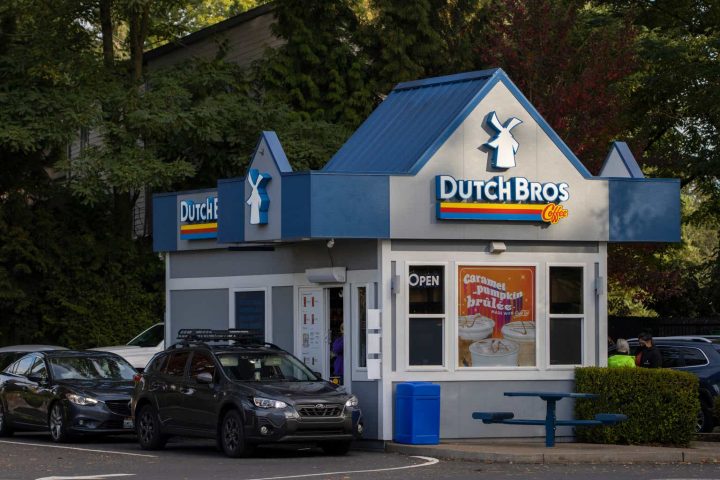Unifi, Inc. (NYSE:UFI) Q1 2024 Earnings Conference Call November 2, 2023 ET
Company Participants
Albert Carey – Executive Chairman
Edmund Ingle – CEO
A.J. Eaker – Treasurer
Conference Call Participants
Anthony Lebiedzinski – Sidoti
A.J. Eaker
Good morning, everyone. Thank you for attending Unifi’s First Quarter Fiscal 2024 Earnings Conference Call. We do apologize for the technical difficulties and the late start, but we will be quick and I hope to answer your questions as quickly as possible. Today’s conference is recorded. And you have the speakers for today as Al Carey, Executive Chairman; Eddie Ingle, Chief Executive Officer; and myself, A.J. Eaker, Interim Chief Financial Officer and Treasurer.
During this call, we’ll reference a webcast presentation that can be found on the Investor Relations section of unifi.com. Please familiarize yourself with Page 2 of that slide deck as I turn the call over to Al Carey.
Albert Carey
Okay. Thank you, A.J. Good morning, everybody. Thanks for joining the call this morning. I’ll start by sharing some thoughts on the quarter and then discuss how we’re managing through this challenging environment we’re in right now, but also how we’re preparing forward, we think will be a much better calendar 2024. After that, I’ll turn it over to Eddie Ingle, our CEO.
If you look at our results, it was a tough quarter from a sales and a profitability standpoint as once again, were impacted by these persistent high levels of apparel inventory at retail and also a slower consumer demand. But the big issue for us is the lack of orders to our plants, and that’s the primary issue. While there are signs of inventory levels that are nearing a bottom across the industry, this destocking process that we’ve talked about in the U.S. for quite some time has moved at a slower pace than we expected. And I believe based on our feedback from customers and also public disclosures by others that are in our sector, the majority of the industry would say the exact same thing.
One thing we’ve heard from our customers is that while brands and retailers are showing encouraging progress towards the destocking and the inventories are getting actually back to right about pre-pandemic levels. Some retailers have taken a more conservative approach as they plan for the upcoming orders and they’ve instructed their buyers to place smaller, more frequent orders than they have in the past in an effort to preserve cash while the interest rates are where they are. We’re beginning to see that now.
All that being said, inventory levels are declining, and at some point, the apparel industry has the stock back up to start to normalize, and it looks like that would be after the holidays. During a time like this is very important for our organization to focus on things that we can control, and we’re doing that. And I would tell you that our team’s morale is good, and our heads are down, and we’re working hard. But those things that we’re focused on are preserving cash and managing inventories closely as well as CapEx. We’re managing our costs tightly.
We are gaining market share in the U.S. as our number one competitor has exited the market. We’re gaining traction with new customers in the segment called beyond apparel. We have several new categories that we’re moving forward on.
And additionally, we have some very interesting innovations on REPREVE, which will contribute to our long-term growth. And we would like to tell you more about that as soon as we have a little bit more details in the future. So we’re going to keep executing against the things in our control in this difficult environment. We believe the future of sustainability only gets bigger with the consumer as time goes on, and this bodes well for our free business, and we see the business getting substantially better in 2024 calendar year.
So that’s my piece. I’d like to turn it back over to Eddie Ingle, our CEO.
Edmund Ingle
Thanks, Al, and good morning, everyone. As Al highlighted, first quarter results came in below our expectations as conditions across the apparel industry have continued to create difficult circumstances for our business. And while it’s been a been challenging for us the last several quarters, we believe we’re nearing the bottom of this destocking situation, and we’re optimistic that the industry will begin its recovery in the first half of calendar 2024.
In the meantime, we will continue to be nimble in managing our operations, navigating this environment and adapting as necessary while at the same time, remaining positioned to meet the current and future needs of our customers. I’m pleased to note that we were able to generate positive free cash flows and a significant increase over recent periods by facing the macro headwinds.
Now turning to Slide three for an overview of the quarter. Continuation of weak demand levels led to lower-than-expected revenue and EBITDA performance during the quarter. In the first quarter, we recorded $138.8 million in net sales, marking an 8% sequential decrease compared to the fourth quarter of 2023. During the quarter, we made a focused effort to recapture customer interest in Central America, spending time reengaging with customers.
Now based on these efforts and new competitive dynamics, we expect to gain market share in the Americas in the coming quarters. From a competitive standpoint in the Americas, one of our direct competitors in the region, AKRA, a Mexico-based production plant and a subsidiary of Alpek recently announced it was shutting down its operations.
As a result, meaningful volumes are in our sites. We expect to capture a large portion of that opportunity. We project that we’ll start to see the benefit of this as we move through the first half of calendar 2024 once the inventory from the closure has been flushed out of the market.
Additionally, in the Americas, we continue to secure new orders for what we are calling beyond apparel in non-apparel markets such as mattresses, soft blowing and more. In Brazil, we are experiencing record volumes and currently operating at 90-plus percent capacity utilization. However, our profitability has been negatively impacted due to the continued margin pressures resulting from Chinese competitors dumping import volumes due to weak demand in their local market, which is causing us to stay at lower pricing levels. Our pricing position should start to improve once China’s operating environment occurs.
Our overall profitability has been temporarily hampered by some pricing adjustments we’ve made to align lower raw material input costs. To help mitigate these pricing pressures, we have been deliberate with our actions to optimize our operations and maximize the productivity of our resources. This includes aligning labor and manufacturing resources to meet the needs of the current demand environment, protect margins and boost efficiency.
Our continued focus on controlling costs across the business is evidenced by our positive cash flow generation during the quarter despite the challenging profitability landscape. We remain committed to controlling costs and disciplined capital management going forward in order to maintain a healthy balance sheet, while ensuring we’re strategically positioned to meet the recovery in demand levels in an efficient manner. It’s important to note that we will continue to invest our resources to develop new innovative products as we believe our innovation capabilities are essential to our growth potential and the expansion of our brand into new categories, especially as it relates to our strong REPREVE platform.
Turning to Slide four to discuss REPREVE and marketing. During the first quarter, REPREVE represented 31% of sales, marking a sequential quarter and year-over-year increase as a percentage of net sales. REPREVE sales continue to be negatively impacted by the ongoing economic environment in China and the overall slowdown in apparel productivity. We remain confident in the demand for our sustainable fibres and believe that as China begins to recover, we will see a rebound of REPREVE as a branded leader in the space.
On the marketing front, our focus remains on elevating our flagship brand, REPREVE through a mix of B2B and B2C initiatives. Leveraging our brand partners is vital as evidenced by marketing partnerships with Toms, Volcom, Neal and Luschek [Ph] and others during the quarter. On the B2B front, we exhibited at a number of trade shows globally over the quarter, where our interest in our cost, cutting-edge textile take-back remains very, very strong. Providing our mill partners with the marketing support they need to tell the REPREVE story is also critical. And as we move through Q2, we will continue to build on our established momentum with a new mix of partnerships combined with new product launches.
I will now pass the call over to A.J. to discuss the financial results.
A.J. Eaker
Thank you, Eddie. Let’s move into the financial results beginning with Slide five. We provided the year-over-year comparison on net sales and gross profit for each first quarter. As expected, consolidated net sales were 22.7% lower than the prior year, primarily resulting from the weak demand environment for apparel and the associated decline in pricing from lower raw material costs.
As mentioned on our last call, the expanded chip and flake product line sales continue to broaden the portfolio in the Americas segment, which also contributed to overall lower average selling prices for this segment. The Brazil segment again saw pricing pressures from competitive Chinese imports in connection with aggressive pricing on production coming out of China. The Asia segment maintained strong pricing and margin profile, thanks in part to Unifi’s innovative pipeline, which is helping to limit the impact on net sales from the overall volume weakness.
From a gross profit perspective, on Slide six, the volume pressure in the Americas, together with the selling price pressures in Brazil unfavorably impacted gross profit.
Turning to Slide seven for a sequential sales comparison. There was a mix of volume and pricing impacts across the segments, specifically in the Americas, year-on-year volume declines were mostly offset by chip-and-flight sales. In Brazil, pricing pressures weighed heavily.
Slide eight conveys the change in gross profit, which is very similar to Q4 of fiscal 2023 in that weaker fixed cost absorption in the Americas was partially offset by modest sequential increases in gross profit within both the Brazil and Asia segments.
Now moving on to our balance sheet and liquidity position on Slide nine. I will cover a few highlights before passing the call back to Eddie. As you recall a year ago, we successfully refinanced our asset-backed credit facility, providing significant liquidity to complement our global cash on hand.
During the quarter, we continue to focus on working capital management and cost controls, enabling us to produce operating cash flows and reduce net debt in this weak demand environment. Furthermore, we produced positive free cash flows in the quarter as we were able to limit our CapEx spend until there is a more pronounced recovery in apparel industry demand. Accordingly, we are confident that our business remains well positioned for realizing profitable growth opportunities when the apparel industry rebounds and its supply chains normalize.
I’ll now pass the call back to Eddie.
Edmund Ingle
Thank you, A.J. Before we turn the call over to our Q&A session, I’d like to turn to Slide 10 for a review of some of our main fiscal 2024 commercial and operational initiatives we implemented in the Americas business at the start of the year. We’ve already discussed the ways in which we have executed against many of these initiatives during the quarter in some capacity with our markets today. But I’ll take a moment to provide a summary of the developments we’ve made across the initiatives during the quarter and the respective go-forward strategy for each.
Starting with the commercial initiatives. We are focused on growth and optimizing the commercial process. Our efforts to diversify our portfolio in the Americas through chip and flake sales have been successful and have experienced strong adoption, and we will continue to pursue this revenue opportunity going forward.
Additionally, on the commercial front, we continue to develop our beyond apparel business and are excited about the growth opportunities in those markets. Further, we are constantly evaluating potential ways to enhance our sales process and improve our customers’ experience. We believe our newly implemented sales process supports better outcomes for us and better experiences for our customers. These efforts should also help us attack the Americas opportunity I mentioned earlier and capitalize on the exit of a competitor from the market.
Lastly, on the commercial side. We’re allocating our time to more frequent customer engagement to better understand their needs and identify ways to deliver the most value to them that we can. This is an ongoing constantly evolving process that we believe will enhance our customer relationships, which in turn drives increasing value creation over time.
Moving to our operational priorities. The existing eBilling installations and the benefits resulting from automation, including improved efficiency and productivity have been valuable, especially as we navigate the demand challenge environment.
From a labor standpoint in the Americas, we continue to manage our headcount through attrition during the quarter, and will maintain a diligent hiring approach in this environment. I want to make sure that this is clear, we have not taken actions to significantly adjust our headcount, but have managed that through a careful attrition process. We’ve done so because we know that we need to flex our organization when market conditions return to normal, which we continue to believe will start in the first half of calendar 2024.
Some of our other key operational initiatives include aligning our production with our customers’ production activities, focusing our attention on working capital to improve cash flows through effective planning. And I want to reiterate how well our team executed on this initiative during the quarter. This will remain a critical focus area for us.
Now let’s turn to Slide 11 of the presentation to discuss our expectations for the upcoming second fiscal quarter. Our forecast for the second quarter of fiscal 2024 include sales and profitability performance that is generally consistent with the just completed first quarter. We are confident in our position as the partner of choice to brands and customers to classic grow, and we believe we have the right short and long-term strategy to drive value for our shareholders.
Now I want to close by thanking all of our Unifi employees for their hard work and efforts as we move through this difficult period.
With that, we will now open the line for questions.
Question-and-Answer Session
Operator
Your first question comes from the line of Anthony Lebiedzinski from Sidoti. Anthony, your line is now open.
Anthony Lebiedzinski
Hi, good morning and thank you for taking the questions. So first, I guess just a quick observation. Overall, a nice job as far as managing your cash flows in a tough demand environment. So congrats on being able to do that. So my first question, as far as pricing. So that was down, I believe, about 18% on a year-over-year basis.
In one of the slides, you guys talked about doing something as far as transforming the pricing execution component of the sales process. So maybe can you just walk us through like I said, with what happened with pricing in the quarter versus a year ago? And how do you think your new initiatives will help to certainly improve on that?
A.J. Eaker
Sure, Anthony, it’s A.J. I’ll start off with that question. The year-over-year difference that you’re seeing labelled as price mix, there’s very much a mix effect in there as well for price. We certainly need to align for our customer value. That’s aligning the pricing with the raw material costs as well as we can. And then I’ll let Eddie also comment on some of the other sales and commercial activities.
Edmund Ingle
Yes. As we mentioned in the last call, we are having to react to the demand situation, and we’re being very careful about making sure we support our customers at this time. And one of the main initiatives we have in this area is activity-based costing process. So we’re really evaluating what is the cost to make these specialty yards? And what does it cost us to make the more commodity type yards, high-running volume items. And so we’re giving the opportunity for our customers to place larger orders and in turn, we can adjust our price accordingly. So we’re going through this process right now. We’re a long way to go, but it’s certainly something that we are focusing on to make sure we bring the right value to our customer at the same time, protect our business.
Anthony Lebiedzinski
Understood. And then as far as the change in competitive dynamics that you spoke about. Any way that you guys maybe could quantify as far as what the opportunity could be for you guys as far as benefits in calendar 2024?
Edmund Ingle
Yes, we are very confident right now that we’re going to pick up the majority of that business for several reasons. That business was being product was going to produce in Mexico that was being exported up here. It was roughly £30 million a year. And we talked about beyond apparel. A lot of that is in the beyond apparel areas like mattress and automotive, and we believe we’re well positioned to service the customers actually better out of the U.S. than out of Mexico.
We have built a lot of new relationships with some of our customers in the last several months as we’ve learned about these new developments. And we’re getting a lot of really positive signals from our customer base. We don’t expect to see the business pick up from this until beginning of the calendar year as the inventories are repeated like we said in the call, but very confident that we’ll be able to support the market as this competitor exits.
Anthony Lebiedzinski
And then in terms of the flake and chip revenue, how much of your sales is coming from that? And kind of what’s the opportunity you think going forward?
A.J. Eaker
Anthony, I’ll start there. It’s still just a modest, not a significant portion of the sales portfolio right now. We’ve continued to use much of that product to balance external sales and internal consumption. But we do see a lot of interest with customers in terms of some of the nontextile and beyond apparel applications with that. But currently, again, not a significant portion of the portfolio, but something we continue to charge towards.
Edmund Ingle
And I’ll add to that, it is obviously a lower price point than the yard because there’s fewer steps involved. But what we are excited about it is a continuation of our drive to put more sustainable products out in the marketplace. And we do believe we have some quality attributes in our chip, especially in our resin, our REPREVE resin that the market is taking up very nicely. So as we move through the year, while we did have a big jump quarter-over-quarter, year-over-year, we do expect to continue that growth as we move through this calendar — this fiscal year.
Anthony Lebiedzinski
Understood. Okay, thank you for that. And then so as you look at the business kind of longer term and obviously, the current demand environment is not good at the moment. But do you think perhaps maybe there is an opportunity for some facility consolidation, maybe perhaps some streamlining opportunities. I mean you do have a lot of fixed cost and a lot of, again, facilities here in the U.S. So how do you think about this longer term in the context of this environment that we’re in? And you mentioned also that retailers may be more careful as far as placing new orders. So just to understand, what are your longer-term thoughts on that?
Edmund Ingle
Good question. First of all, on the retailers, I think they are going to be cautious around what they order. But what that does mean they will be waiting until the last minute. But when the last minute comes, we do expect to see a sort of sharp increase in demand, especially in Central America as the inventories are finally destocked and the consumer demand gets back to more normal.
But from a fixed cost point of view, we are looking at that all the time. We’ve done a lot of work already around trying to reduce our fixed costs. We are very diligent about looking at all and every options. And as we move through the fiscal year, we’re going to be looking at what is the real demand out there in the marketplace and we’re adjusting accordingly.
Anthony Lebiedzinski
Okay. Understood. Okay, well thank you very much and best of luck.
Edmund Ingle
Thank you very much. Thank you Anthony.
Operator
There are no further questions at this time. This concludes today’s conference call. You may now disconnect.
Read the full article here







